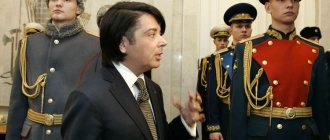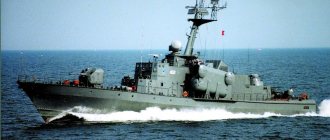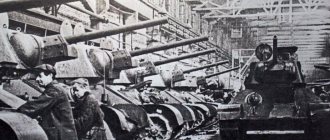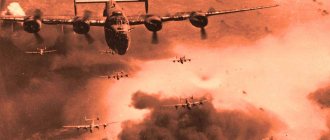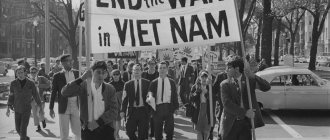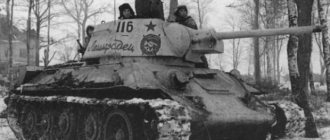The German He.111 aircraft became, along with the Bf.109 fighters and Ju.87 dive bombers, one of the symbols of the blitzkrieg. The Heinkel, of course, was neither the only nor the best medium bomber of the Reich aviation. But his combat journey turned out to be so long that the Junkers, Dornier, and later Heinkels are unlikely to compare with him in terms of fame.
Developed back in the mid-1930s, it was discontinued only in 1944. Considering how quickly aircraft manufacturing developed during World War II, the He.111 had a very long life.
History of creation
The specifics of the development of the German military industry in the 20-30s were determined by the terms of the Treaty of Versailles. Not having the right to even develop combat aircraft, the Germans were not going to put up with this ban and tried to find loopholes.
He-111G - civil version
From the completely obvious idea of arming transport workers, if necessary, they moved on to a more cunning one. The designers were asked to develop airliners capable of being both passenger and high-speed bombers. The first attempts to create such machines, like the bomber version of the three-engine Ju.52, were not particularly successful.
The He.111 aircraft belonged to the next generation of bombers.
Even in appearance it did not resemble its predecessors: not a bulky, angular “flying coffin”, but a fast, streamlined monoplane with a retractable landing gear. There were significant similarities with the previous passenger Heinkel He.70 “Molniya”, but since the new aircraft was twin-engine, it received the name “Double Lightning”.
Although Heinkel began making its first flights in 1935, when the existence of the Luftwaffe was officially announced, the plant managed to prepare both military and passenger modifications. They differed only slightly from each other. The airliner had a passenger compartment in place of the bomb bay, and a luggage compartment was installed instead of the navigator's cabin.
History[edit]
In the early 1930s, German aircraft designer Ernst Heinkel decided to build the world's fastest passenger aircraft (this task was viewed with skepticism by both representatives of the German aircraft industry and new political leaders in Germany). Heinkel entrusted the design of the aircraft to the Gunter brothers, new people for his company.
The designed aircraft was superior to the existing Lockheed 9 Orion, which was a direct competitor to Heinkel's design. The first copy of the soon to become widely known Heinkel He 70 “Blitz”
(German: "Lightning") took off in 1932 and immediately began breaking speed records. In its regular four-passenger version, it could reach speeds of up to 320 km/h, although it was equipped with a single BMW V1 engine producing only 600 hp. With. The elliptical wing shape, already used by the Günther brothers when developing their own sports aircraft, the Bäumer Sausewind, before joining the Heinkel company, became characteristic of all subsequent developments of the brothers.
The design attracted the attention of the Luftwaffe, which was selecting aircraft for development into medium strategic bombers.
Main modifications of the He.111
Series A - pre-production prototypes equipped with BMWVI engines. Subsequently sold to China. Series B is a mass modification, in production since 1936. Equipped with DB600 engines. Series D - a variant with a modified wing design and DB600Ga engines.
Since all the engines were required for the production of the Bf.109 and Bf.110 fighters, the construction of the bombers was cancelled.
Series E - produced since 1938, received Jumo 211 engines. Series F - aircraft with a modified wing design, originally built for export to Turkey. Series P is a model with a seriously modified fuselage. The traditional pilot's cockpit, located behind the bombardier's cabin, was replaced by a fully glazed bow cockpit. DB601 engines were used.
The H series is the most popular and most advanced version of the He.111. The motors in this series are Jumo211. The bombers were produced from 1939 to 1944. Worth mentioning is the He.111 Z, designed to tow Me gliders. 321. The fuselages of the two Heinkels were connected by the central wing section to the fifth engine. They also tried to use him as a scout.
Civil versions of the aircraft were reduced to two production series - C and G. At the same time, Lufthansa operated no more than twelve passenger He.111. After the war, the Heinkels were assembled in Spain under the name CASA 2.111. After being re-equipped with British Rolls-Royce engines, they served until 1973.
Production[edit]
The number of different modifications of the He 111 produced until September 30, 1944 is presented in the table [ source not specified 3200 days
].
| Option | EHF | NDW | HWO | ArB | ATG | J.F.M. | Total |
| Prototype | 4 | 4 | |||||
| A-0 | 10 | 10 | |||||
| A | 6 | 6 | |||||
| B-0 | 7 | 7 | |||||
| B | 136 | 283 | 419 | ||||
| C | 12 | 12 | |||||
| D | 30 | 30 | |||||
| E | 80 | 50 | 40 | 40 | 210 | ||
| F | 45 | 45 | |||||
| G | about 8 | about 8 | |||||
| J | 120 | 120 | |||||
| L (Umbau) | (6) | ||||||
| P-1 | 75 | 20 | 95 | ||||
| P-2 | 451 | 288 | 739 | ||||
| P-4 (Umbau) | (156) | ||||||
| H-1 | 95 | 21 | 20 | 136 | |||
| H-2 | 180 | 182 | 140 | 502 | |||
| H-3 | 182 | 196 | 126 | 504 | |||
| H-4 | 117 ? | ||||||
| H-5 | 560 ? | ||||||
| H-6 | 1 745 | 1 745 | |||||
| H-6tp | 30 | 30 | |||||
| H-11 | 301 | 301 | |||||
| H-11 TO | 200 | 200 | |||||
| H-14 | 50 | 50 | |||||
| H-16 | 200 | 200 | |||||
| H-16/R1 | 900 | 900 | |||||
| H-20 | 770 | 770 | |||||
| Z | (12) | (12) | |||||
| Total | 780 | 671 | 4773 | 449 | 326 | 40 | 7716 |
Production of all modifications by year (pieces):
- 1939—452
- 1940—756
- 1941—950
- 1942—1337
- 1943—1405
- 1944—756
Combat use
The first operators of Heinkel were the Chinese. Ernst Heinkel was able to sell six Series A aircraft to Field Marshal Chiang Kai-shek. In China, the career of the He.111 “did not work out” - already on the first flight, three out of five bombers were lost (according to other sources, two out of three). The remaining cars were used as transport for some time.
In 1937, the He.111B was tested in combat conditions by the Reich.
More precisely, German pilots who fought as part of the Condor Legion in Spain. Combat tests showed the superiority of the Heinkel over its competitors - Ju.86 and Do.17. Of the 94 bombers, 58 survived the Spanish campaign. They remained in Spain as the backbone of the bombing air force.
Truly massive use of the He.111 began with the beginning of World War II. Heinkels destroyed Polish troops and took part in strategic raids on British naval bases. They bombed France and were the backbone of bomber squadrons during the Battle of Britain. The German invasion of the Balkans took little time, but the He.111 played a key role there too.
After the start of the campaign against the Soviet Union, the Heinkel was used for some time to destroy trains, and in the winter of 1941-42 it was used as a transport vehicle to evacuate wounded and frostbitten soldiers to the rear.
In 1943, He.111s were still used for strategic bombing, but now their numbers were steadily decreasing.
The old aircraft reluctantly gave way to the more advanced Ju.88 and Do.217. They tried to use the He.111 H-22 as a missile carrier armed with V-1 cruise missiles, but without much success. The characteristics of the Heinkel changed slightly, but British air defense was much stronger than in 1940.
In 1944, the bomber was taken out of production, and some of the remaining ones were converted into cargo aircraft. However, the Heinkel’s combat journey did not end there yet. The last time the old aircraft was used was in 1957. Spanish CASA 2.111 then bombed Moroccan guerrillas.
Flight performance in comparison with analogues
For comparison, let’s take the He.111 of the most popular series, its more modern competitor – the Ju.88 and the Soviet Il-4 bomber.
| He.111H | Ju.88 A4 | IL-4 | |
| Length, m | 16.6 | 14.3 | 14.8 |
| Wingspan, m | 22.6 | 20 | 21.4 |
| Maximum speed, km/h | 440 | 510 | 450 |
| Practical range, km | 2000 | 1790 | 3800 |
| Defensive weapons | 7 machine guns of 7.92 mm caliber, 1 machine gun of 13.2 mm caliber, 1 cannon of 20 mm caliber | 5 machine guns of 7.92 mm caliber | 2 machine guns of 7.62 mm caliber, 1 machine gun of 12.7 mm caliber |
| Bomb load | 2000 kg in bomb bay, up to 3600 kg on external holders | 1400 kg in bomb bays, up to 3000 kg on external holders | Up to 2500 kg |
It is clear from the figures that the early modification of the Junkers was somewhat inferior to the Heinkel in terms of bomb power, but was much superior in speed. This is not to mention the fact that the “eighty-eighth” could throw bombs from a dive and could serve as a heavy or night fighter. In other words, the Ju.88 was universal. Well, the Soviet equivalent left the German far behind in terms of flight range. However, small combat radii were a common problem for most Luftwaffe vehicles.
The He.111 was a very successful aircraft for its time. And even more successful - for a bomber, which, if necessary, could be passed off as a passenger airliner. The crews loved the Heinkel for its reliability and ease of operation; in terms of combat effectiveness, it was not inferior to its competitors. But it reached the pinnacle of its development even before the start of World War II - it became the H series.
Subsequently, the design of the aircraft did not change significantly; modernization was limited to strengthening defensive weapons and installing armor protection.
These improvements increased the weight of the aircraft and, thus, “nullified” the effects of the increase in engine power.
The continued production of the rapidly aging Heinkel can be explained, first of all, by the fear of losing production rates. In addition, the “dual purpose” of the aircraft made it possible to use it quite effectively for transport purposes.
Combat aircraft. "Heinkel" He.111. Justified compulsion
So, Heinkel He.111.
We won’t use the labels “symbol of the Blitzkrieg” and “the beauty and pride of the Luftwaffe,” but the plane was quite remarkable. If only by the fact that he fought the entire war, from the first to the last day, and this already says a lot.
Not really. It happened, and it turned out very strange. But let's go in order.
Order begins when there really was none. More precisely, when Germany was tied up by the Treaty of Versailles after the First World War, and both the Air Force and the Navy really wanted it. But if it wasn’t entirely convenient with ships, it worked with airplanes.
We even remember the author of this cute idea. Lieutenant Colonel Wimmer of the Reichswehr proposed designing and building “auxiliary bombers,” apparently by analogy with auxiliary cruisers, or more precisely, raiders at sea.
The idea came up: to design a bomber that could be passed off to observers as a passenger plane - why not? A technical specification was issued for a twin-engine dual-purpose aircraft that could be used as a bomber and as a high-speed passenger or postal vehicle. Priority, of course, was given to military functions.
Junkers and Heinkel began working on the project.
The first such dual-purpose vehicle, as they would say now, was the Junkers Ju.86. Its prototype took off from the airfield in Dessau on November 4, 1934.
The military and civilian versions of the aircraft differed in the forward part of the fuselage (with and without a navigator-bombardier's cabin), the presence or absence of weapons and cabin equipment. The passenger car had a cabin with ten seats in the fuselage, while the military car also housed internal bomb clusters.
For a passenger plane, "Aunt Yu" was frankly a bit cramped, but as a bomber... However, we already wrote about this.
Heinkel lagged behind its competitors, but what the Gunter brothers achieved surpassed the work of Junkers.
In general, the twin brothers Siegfried and Walter Gunther (pictured with Ernst Heinkel) did a good job. The first of them dealt with calculations, and the second with the general layout of the aircraft.
They created a completely modern all-metal cantilever monoplane with smooth skin, closed cockpits and retractable landing gear. With a very voluminous fuselage, which is useful for both a bomber and a passenger aircraft.
The wing, so recognizable, was simply borrowed by the Gunthers from a high-speed passenger aircraft of their own design, He.70.
What was sad about Germany in those years was the engines. About the same as in the USSR at that time, and perhaps worse. There were no own engines more powerful than 750 hp. The Gunthers chose BMW VI.60Z engines with 690 hp. This was the minimum for the bomber to fly at least somehow.
The military version of the aircraft had a narrow, elongated nose ending in a glassed-in cockpit for the navigator-bombardier. There was a slot in the cockpit glass for a 7.9 mm machine gun. The same machine gun was planned to be installed in an open top mount. The third machine gun was mounted in a turret that moved down.
The bombs were placed vertically inside the fuselage in cassettes. The maximum load consisted of eight bombs of 100 kg each. According to the assignment, the military version of the aircraft was designed for a crew of four: a pilot, a navigator-bombardier, a gunner-radio operator and a gunner.
In its civilian version, the aircraft could carry ten passengers in two cabins: four in the former bomb bay and six in the cabin behind the wing. Luggage and mail were placed in the trunk, located in the place of the navigator's cabin. In the passenger version, the forward part of the fuselage was not glazed.
It was this aircraft that received the designation He.111.
Orders have been received for both military and civil aircraft. The main version of the new aircraft was considered military.
A few words about the most important difference. About weapons.
Defensive armament, as mentioned above, consisted of three 7.9-mm MG.15 machine guns, located in the glazed nose, the upper turret and the turret extending downwards.
The MG.15 was fed with cartridges from the magazine; spent cartridges were dumped into a bag attached to the machine gun. The navigator fired from the bow machine gun. The barrel moved left and right in a narrow gap covered by a blow-out shield. The upper firing point was open; only the front of the gunner was protected from the oncoming flow by a wind visor. Downward and backward firing was provided by the lower retractable turret, open at the rear. In a combat position, she went down with the shooter seated inside.
Naturally, as soon as the aircraft went into production, modernization and improvements began, which the Germans were great masters at.
Already from the second modification of the B-2, the aircraft received DB 600CG engines with increased supercharging (maximum power - 950 hp), which had improved high-altitude characteristics. The radiator was placed in a protrusion, improving the aerodynamics, and additional radiators were placed under the leading edge of the wing.
All this made it possible to increase the maximum speed to 370 km/h, which the military definitely liked and the first four copies of the B-2 were sent to Spain for testing in combat conditions.
Bomber Group II/KG 152 was the first to receive the He.111B. It was given nine He.111B and nine Do.17E for comparison. The Heinkel pilots liked it. It was leisurely and not very maneuverable, but was distinguished by good controllability and ease of takeoff and landing.
While the units were mastering and getting used to the He.111B, the company was preparing the next version, D.
In mid-1937, Walter Günther, having lost his brother, continued work on the aircraft alone. He proposed changing the contours of the bow, abandoning the traditional ledge between the canopy of the pilot's cabin and the navigator's cabin located below.
Now the seats of the pilot and navigator-bombardier were nearby. The navigator had a folding seat to the right of the pilot; when firing, he moved to the stock in the very nose of the car. The heavily glazed nose of the fuselage had smooth contours and ended in front with an Ikaria ball machine gun mount. To prevent the navigator lying on the machine gun from blocking the pilot’s view, the installation was shifted to the right.
[center]
This is how Heinkel acquired its original, but somewhat asymmetrical (I would say lopsided) silhouette.
Here an incident occurred, from which the German engineers came out, from my point of view, simply superbly.
With this new arrangement, the glass moved very far away from the pilot’s eyes, and since it had quite a bend, tilt and curvature, this immediately created problems with the pilot’s visibility, especially in bad weather. Having stuck a couple of planes into the ground during testing, the Germans realized that something had gone wrong...
A solution was found, but to say that it was extremely original is to say nothing at all!
If necessary, the pilot's seat, together (!!!) with the controls, was hydraulically raised upward, and the pilot's head protruded out through the sliding hatch in the glass. And the pilot could turn his turret in all directions.
A small folding visor covered my head from the oncoming flow. The most interesting thing is that the pilot could remain in this position indefinitely or until he froze everything. Even the main instrument panel was located on the ceiling of the cabin and was clearly visible to the pilot from both positions.
By the way, through the same hatch the pilot could leave the plane if something happened.
Luftwaffe representatives had complaints not only about the pilot’s seat. More precisely, there were no complaints about the position of the navigator-gunner. Unlike other jobs.
The top gunner covered himself from the oncoming flow with only a small visor. At speeds above 250 km/h, two problems arose at once: the air flow blew into the fuselage, and the barrel of the machine gun could only be turned sideways from the axis of the aircraft only with great difficulty.
With the retractable bottom mount everything was even better. In the extended combat position, it created enormous aerodynamic drag, “eating” up to 40 km/h. But this is only half the story, the installation itself, or as it was also called “Tower C,” simply got stuck in the lower position, and then the problems began in full.
The shooter could not always leave it, especially if it jammed in the lowest position, and when landing, the unretracted installation touched the ground, which guaranteed an accident.
It was also not very convenient for the shooter to be in the installation; the windswept shooter not only experienced some discomfort in the cold, but also the complete lack of armor made him a very easy victim for enemy fighters. Statistics on the use of He.111 in Spain indicated almost 60% of the losses of the lower shooters.
Therefore, Walter Günther developed and installed a fixed ventral gondola, which replaced the retractable installation. It had much less resistance, and the machine gun mount in it was always ready for battle. The shooter was placed in a supine position on a mattress. There was a hatch on board the gondola through which the crew entered the plane.
The upper shooting point was also changed. Instead of a small wind visor, a sliding semi-closed canopy was introduced. When firing, it manually moved forward, providing a significant field of fire.
On the subsequent series of He.111E aircraft, Jumo 211A-1 engines were installed, which made it possible to increase the bomb load to 1700 kg, which in itself was a very good figure. The maximum speed, even with overload (2000 kg of bombs), was 390 km/h, which was quite decent for that time.
In March 1938, the first of 45 He.111E-1s also went to Spain. It is natural that the aircraft repeated the success of the previous model.
Here, however, the lack of worthy destructive counteraction among the Republicans played a certain role. That’s why a bomber with three machine guns seemed like something well-armed.
The Luftwaffe command generally decided that weakly armed, without fighter cover, but relatively fast bombers could continue to carry out their tasks.
Some two years later, during the Battle of Britain, the Luftwaffe will pay for these mistakes in full with the blood of its pilots.
Then a very interesting moment happened. Based on modification F, the first German wheeled torpedo bomber He.111J was created. The engines were again supplied from Daimler, DB 600CG.
The torpedo bomber turned out to be interesting. Under the center section it was possible to hang bombs with a caliber of up to 500 kg, LT F5b torpedoes (765 kg each) or aircraft magnetic bottom mines (two each). There was no provision for internal placement of bombs.
Several J-1 modification aircraft were later equipped to carry the L10 Friedensengel glide torpedo. The gliding torpedo was suspended under the fuselage along the axis of the aircraft. In this case, it was only possible to take off from a flat concrete strip, since the clearance from the rudders and propellers of the torpedo to the ground was very small.
The drop was carried out from a height of 2500 m, directing the aircraft towards the target. 3 seconds after the release, a 25 m long wire was released from a container under the wing. It was part of the altitude sensor. When the gliding torpedo was at a height of 10 m above the water, the pyro-mechanism shot off the torpedo's wing and tail. The torpedo went under the water, launched its propellers and eventually hit the target (or did not hit). After testing in the fall of 1942, the Friedensengel was put into production; several hundred were made.
The He.111J-1 was allegedly even turned into a missile carrier, and it carried the A-4 (V-2) ballistic missile. I did not find any visual confirmation. The V-2 weighed almost 13 tons at launch, so I doubt that the He.111 could have carried it. Plus the length is more than 10 meters.
But the Heinkel V-1 was easily carried. And they launched it, however, without much success. The British quickly realized that it was easier to intercept a slow He.111, coupled with a missile, on the way and salvage it, rather than then chase after a launched V-V. But more on that below.
They also made a number of minesweepers, equipping the aircraft with a device for cutting balloon cables. The frame formed a triangle with slightly convex sides. The cable slid along the frame to the end of the wing and fell on the electric knives that cut it.
The frame and its fastenings, together with the knives, created an additional weight of approximately 250 kg, which greatly shifted the centering forward. To compensate, ballast was placed in the rear of the bomber. In total, about 30 vehicles were manufactured, but the weight of the frame and ballast forced a reduction in the bomb load and deteriorated flight performance. Therefore, after several operations over England, the surviving aircraft were converted into glider tugs.
In general, He.111 became a kind of laboratory for testing new types of weapons. In 1942, it was on He.111 that the radio-controlled bomb FX 1400 (“Fritz X”) was tested.
Several He.111N-6s equipped with FuG 203 "Kel" control system transmitters were used to test the FX 1400 in Foggia (Northern Italy).
Despite some successes, the Heinkel turned out to be completely unsuitable as a carrier of such weapons and therefore did not find use in a combat situation.
Other He.111s, equipped with FuG 103 radio altimeters, served for test drops of BV 246 Hagelkorn gliding bombs. Tests of the previously mentioned L10 Friedensengel gliding torpedoes were also carried out.
But all these exotic types of weapons were only tested on the He.111; in no case did it come to use in battle. With the exception, as already mentioned, of the V-1.
In 1943-44, it was experimentally found that the He.111 was quite capable of carrying and launching in flight a projectile aircraft (or a cruise missile with a pulsating jet engine) Fi.103 (aka FZG 76 and VI, V-1/ "V-1". The total weight of the device when fueled was 2180 kg, so even with an overload, the Fau could take the 111th.
Initially they wanted to mount the Fau on racks above the fuselage. After starting the rocket engine (it was produced by an electric fuse from the side of the carrier), it had to be unhooked, and the bomber would go down in a gentle dive to avoid a collision.
However, the option did not work; after uncoupling, the V-Fau fell down without picking up speed, and the He.111 was absolutely not the aircraft that could easily dodge.
Then they used a different scheme. The bomber carried a missile under the root of the wing, asymmetrically - on the right or left, so that the engine, mounted above the fin of the Vau, was located parallel to the fuselage of the carrier.
In general, such a fastening of the projectile significantly worsened the weight distribution and complicated piloting. Naturally, the speed also dropped, which was completely unpleasant.
But launching from an airplane had its advantages. Yes, they fired much more accurately from ground-based launchers; the systems of reference and orientation in space at that time were very simple and unpretentious. But the ground installations unmasked themselves, they were constantly hunted by enemy reconnaissance, they were constantly bombed and fired upon by Allied aircraft.
And launching from the air made it possible to attack where the air defense system was not ideal.
The first combat flight of the He.111 with the Vau was made on July 8, firing several missiles at Southampton. By the end of 1944, approximately 300 Fi.103s were fired from carrier aircraft over London, 90 over Southampton, and another 20 over Gloucester.
The efficiency was quite low. For example, on September 15, 1944, 15 He.111N flew against London. It was possible to successfully drop only nine V-Vs, two of which reached the target, the rest fell into the sea due to failures or were shot down by British fighters.
However, these operations were very dangerous, and KG 53, which was involved in the launches, suffered heavy losses. For example, group 11/KG 53 lost 12 aircraft over two missions as a result of shell explosions as the carriers took off. Combat missions with missiles were stopped on January 14, 1945. During the entire period of launches, the Germans lost 77 aircraft, of which approximately 30 were lost when the missiles were separated from the carriers. A total of 1,200 bomb planes were sent to the British Isles.
Here is the application history. This is in addition to the usual bombing and torpedo launches, which the 111th did throughout the war, from the first to the last day.
The plane, despite a large number of disadvantages, was loved by pilots. Excellent visibility from the cockpit, reliability, good stability and controllability in all flight modes. Separately, I would like to say a few words about booking.
The armor protection of the 111th looked very serious. The pilot's seat cup (5 mm thick) and back (10 mm) were made from armor steel. Under the navigator's seat (both in a sitting and lying position) there was a strip of armor 5 mm thick. Armored glass 60 mm thick was placed in the canopy of the canopy in front of the top shooter. The rear of the gunner's cabin was covered by three 8 mm plates, forming a fuselage partition. In the gondola, 6 mm thick armor plates covered the sides and bottom, including the entrance hatch. From bullets flying from the area above and behind the aircraft, the gondola was protected by an 8 mm sheet. The top of the oil cooler tunnel was covered with a 6 mm steel sheet, and at the outlet there was an 8 mm damper.
Add to this the measures to increase survivability that German designers introduced earlier. The walls of the fiber tanks were easily pierced by a bullet, but the fiber did not bend into petals like duralumin, preventing the tread from closing the hole. The Germans' tread was of excellent quality; all gasoline and oil tanks were protected, including additional ones mounted in the bomb bay instead of cassettes.
The fire protection system worked perfectly (as the Luftwaffe pilots wrote in their memoirs).
Control was implemented using rigid rods. Yes, this gave additional weight, and quite a lot, but it was much more difficult to break the traction than the cable.
In principle, the only useful thing that the Germans did not have was a system for filling gas tanks with waste exhaust gases. But this was actually our invention.
The production of He 111 in Germany was completed in the fall of 1944. The overall data from various sources do not coincide with each other. They range from 6500 to 7300 and even 7700 aircraft. Since the aircraft were manufactured not only in Germany, it is very difficult to say how many He.111s were actually produced.
The Heinkel He.111 was produced in more than 70 variants and modifications, but alas, the efficiency of the aircraft gradually began to decline.
But why then didn’t the Luftwaffe command remove the aircraft from production in favor of new models?
I think that the point is precisely in the reluctance to lose the established production of aircraft that have proven themselves well. The fact that an increase in engine power took away from an increase in armor and armament did not improve the performance. But no one wanted to allow the production of combat aircraft to fall.
In addition, in addition to bombing and torpedo throwing, He.111s performed a very wide range of combat missions. Airborne landings, transport operations, towing gliders, launching glide bombs and projectile aircraft.
But here high speed seemed not to be required, which is why the He.111 fought so calmly until the very end of the war. Although, of course, the closer to the end of the war, the more difficult it was to use it, despite the constantly increasing armor and defensive weapons.
Ne.111, although not an easy one, became a victim for Allied fighters.
Flight characteristics of He.111N-16
Wing span, m: 22.60 Length, m: 16.60 Height, m: 4.00 Wing area, m2: 87.70
Weight, kg - empty aircraft: 8,690 - normal take-off: 14,000
Engines: 2 x Junkers Jumo-211f-2 x 1350 hp
Maximum speed, km/h — at the ground: 360 — at altitude: 430 Cruising speed, km/h — at the ground: 310 — at altitude: 370
Combat range, km: 2,000 Maximum rate of climb, m/min: 240 Service ceiling, m: 8,500
Crew, people: 5
Armament: - one 20-mm MG-FF cannon in the nose (sometimes another 7.9-mm MG-15 machine gun); — one 13-mm MG-131 machine gun in the top mount; — two 7.92 mm MG-81 machine guns in the rear of the lower gondola; — one MG-15 or MG-81 or a pair of MG-81 in the side windows; - 32 x 50-kg, or 8 x 250-kg, or 16 x 50-kg + 1 x 1,000-kg bombs on an external holder, or 1 x 2,000-kg + 1 x 1,000-kg on external holders.


